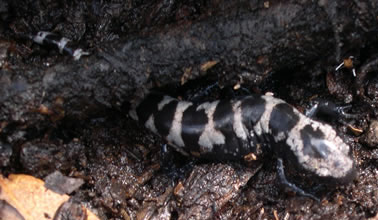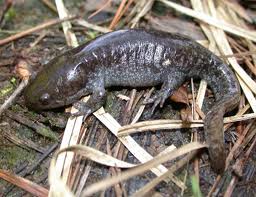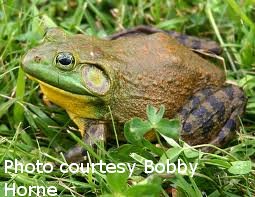
Marbled Salamander - Ambystoma opacum (DNWR)
In Mississippi, there is only one aquatic species (Siren intermedia) that has only two legs, all others (terrestrial or aquatic) have four. All salamanders are carnivorous predators that eat a wide range of animals from invertebrates (earthworms, insects, etc.) to vertebrates (frogs, fish, other salamanders, etc.). There are about 32 species of salamanders representing eight families in the state of Mississippi.
Mostly terrestrial, salamanders live in the leaf litter of the forest, near seeps, springs, or streamsides. They are beneficial to the soil because of their burrowing activities and provide prey for other predators.
In Mississippi there are four families: Amphiumidae, Cryptobranchidae, Proteidae, and Sirenidae that are

obligately aquatic and are rarely seen by most people. Some of the members of the family Ambystomatidae may retain larval features such as gills into adulthood, but the ones that do are usually facultative; which means that they can lose the larval features and metamorphose into a terrestrial adult if the environmental conditions warrant it.
